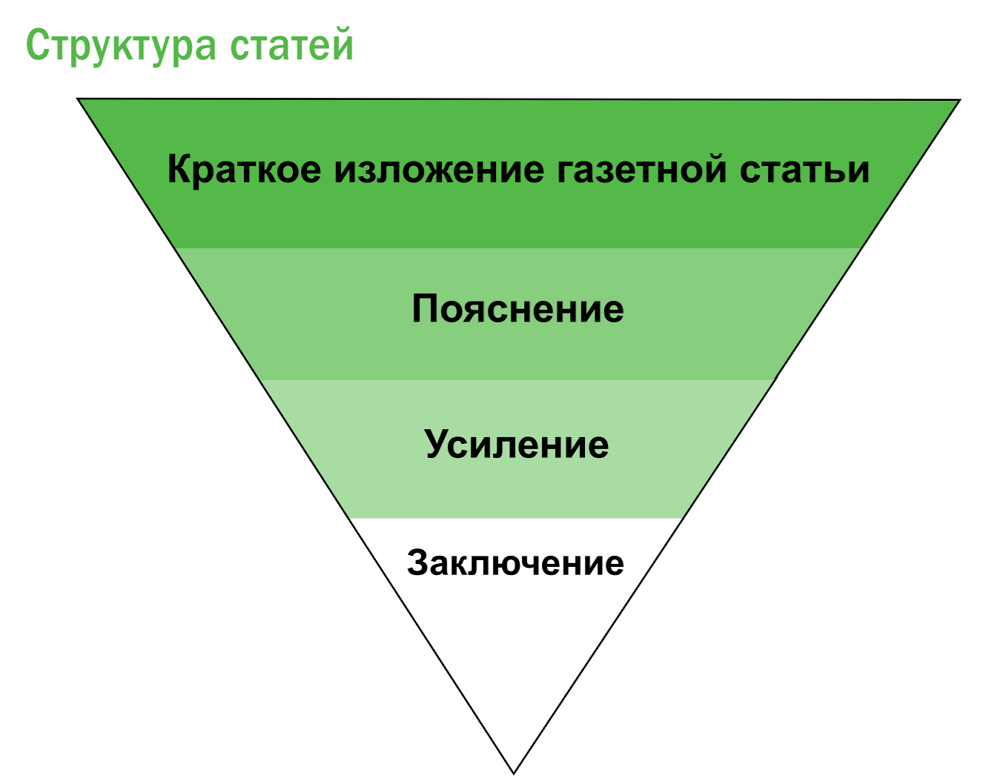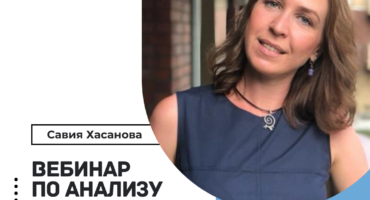Very often, newcomers to online journalism do not know where to start: what the article consists of, how to build proposals, what principles must be observed. When novice journalists come to me, they are enthusiastic and they shape up for the fact that everyone in the world will run to read their masterpieces. Likes and comments will immediately sprinkle, and the senior colleagues will begin to shake hands as a sign of respect. Not really.
Before you start writing, you need to understand a few simple truths.
First. Your reader does not have much time for your text. If your text will be read on average for about a minute – that’s good. In most cases, the reader is limited by reading the title and viewing the picture. This is confirmed by studies during which special equipment followed the eyes of users while reading articles on the Internet.
Second. You are struggling with other content for the reader’s attention. That is, your text appears in the same feed of the user’s social networks along with photos of cats and congratulations from friends. This means that you are in advance in a more losing position.
Third. Even writing well is not enough. You must also find the reader. Do not expect the reader himself to come and read your text. Now, the work of a journalist also includes attracting an audience through various channels: be it social networks or mailing list.
All this doesn’t sound very good, right? Perhaps, but these are the realities of creating content on the Internet. Let’s think about what to do now.
The principle of the “inverted pyramid”
The first thing to do is to capture the attention of the reader. This will help us change the approach to writing texts: the most important thing is at the very beginning.
This principle is called the “inverted pyramid”. An ordinary pyramid is a chronological narrative with all the elements of an artistic narrative. But we, news journalists, are not authors of fiction books and detective stories. If the killer is a gardener, then this is reported at the very beginning.

Inverted pyramid. Illustration: IWPR
The headline is what the reader will read first. A classic news headline should convey the essence of the article, answer the question “what happened?”, Contain an active verb and be no more than 10 words.
Now let’s practice.
Text of the press release: A meeting of the presidents of Kyrgyzstan and Russia was held in Moscow. The parties noted the importance of joint cooperation and exchanged views. At this meeting, the heads of state signed a bilateral agreement on the construction of another Russian air base in Kyrgyzstan, in the south of the country. The President of Kyrgyzstan called Russia the main strategic partner and noted the importance of the country’s membership in the EAEU. The Russian president said that he shares the opinion of his Kyrgyz counterpart and respects the choice of the people of Kyrgyzstan, who elected a new president.
Suppose you receive a press release stating that there was a meeting between the presidents of Kyrgyzstan and Russia.
The text says that “the heads of states consider their countries to be strategic partners and are aimed at ensuring cooperation at a high level.”
They also agreed “to build a Russian air base in southern Kyrgyzstan. The President of Russia also congratulated his colleague on his election as head of state. ”
Let us think what can be pulled out of this into the header, and what the essence of the message is.
Quite often, journalists put in the headlines the very fact of the meeting, but in fact this is not always interesting. Presidents periodically meet with different people, and it’s not our task to write about each meeting of the head of state if, in the end, nothing was decided.
Much more important for the reader is the outcome of the meeting. How did it end? The answer to this question will be the heading of our material.
If there is no outcome of the meeting, and the presidents met in order to further maintain relations between themselves, then perhaps it is not necessary to write about this.
Of course, there are exceptions when the fact of the meeting is news. For example, if there are two politicians who have been in a quarrel for a long time.
As a result, we leave only that the presidents agreed on the construction of an air base in southern Kyrgyzstan.
To come up with a headline is a whole art, because you have to balance between communicating as much information as possible and intriguing the reader to follow the link and read your text.
Writing the text
5W will help you with this – that is: Who? What? Where? When? Why? In the text you should have answers to these basic questions. Who was involved? What happened? Where did this happen? When did it happen? And why did this happen?
Do not forget about the inverted pyramid – in the first paragraphs of the text write about what is most important and what happened recently, and at the end add the background to the conflict and an explanation of the importance and context of what is happening.
Try to write the sentences simple, complicated by a maximum of one participial or participial turn. Imagine writing a text for your younger brother, who is in grade 9. It is necessary that after reading the text your brother fully understand its meaning.
Paragraphs should consist of a maximum of one or two sentences. One paragraph – one thought. If your text looks like a cinder block, then the reader will not be able to cope with it visually.
We avoid clericalism and modality, use active verbs instead of passive ones. If there are large numbers in the text, then we simplify them for perception.
If you need to show the scale of something, it is better to use comparisons with something that is close to your readers. For example, the area of a fire can be compared with the number of football fields. They are much easier to imagine than any number of hectares.
Try to place visual elements on the text so that your eyes rest from the text. If it is possible to add several illustrations inside the text – add, but do not abuse. One photo on one monitor screen is normal.
If there are no photos, you can select quotes or create lists. They also visually dilute the text.
Now you can imagine how to write for the Internet. But this is still not enough. Your articles – if you want to be a professional journalist – must meet the standards of the profession.
This means that writing anything you like will not work. This means that the reader must not only be lured, but also respected and not deceived. That is – we write accurately and clearly, check the facts, give the floor to all parties to the conflict, do not express our opinion.
Remember that your information should be not only fast, but first of all reliable.
Additional literature:
Reporting for Change: An IWPR Guide for Local Journalists in Crisis Regions ( in Russian )
If you have found a spelling error, please, notify us by selecting that text and pressing Ctrl+Enter.






